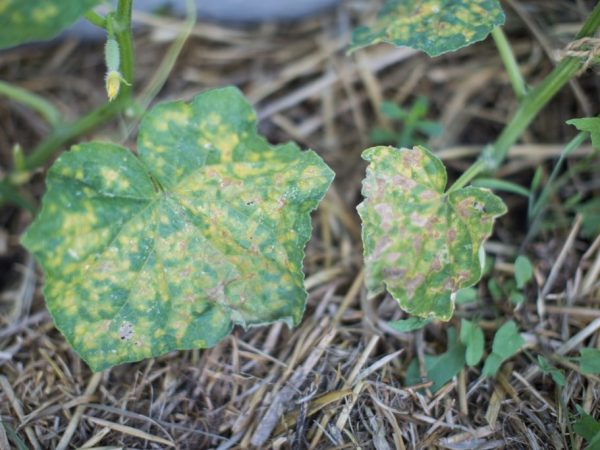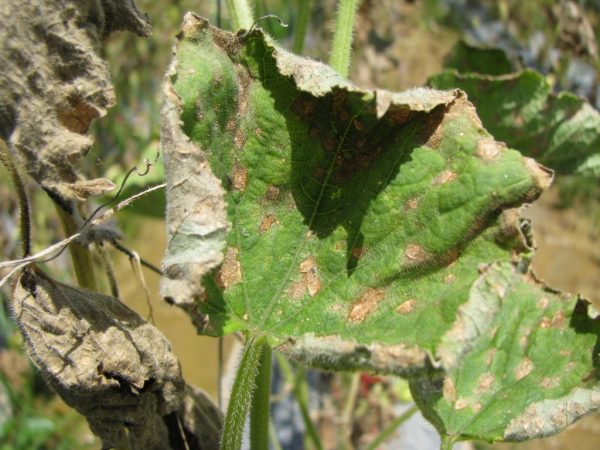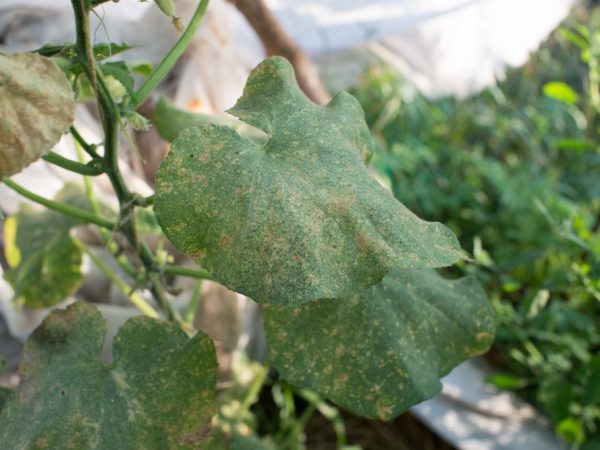What to do if cucumbers rot in the greenhouse
Often gardeners are faced with the fact that cucumbers rot in the greenhouse. They mold and become unusable. Subsequently, the yield of the vegetable falls. The main problem is that rot quickly spreads to neighboring cucumber bushes.

Causes of rotting cucumbers in the greenhouse
If you do not start to fight against this disease, the situation may become even worse next year. Therefore, it is necessary to observe preventive measures and start treatment on time.
White rot
Formed on stems, leaves, fruits.
Subsequently, excessive moisture occurs in the greenhouse. The first sign is weeping spots that start near the root and rise to the leaves. A build-up appears in their place. Outwardly, it resembles cotton wool.
It gradually grows and increases in size. After that, mucus begins to drip from the build-up. Able to infect neighboring cucumber bushes.
Gradually turns into black spots located along the entire length of the vegetable. Affects the entire plant and destroys the entire crop.
Control methods
The main rule is to deal with pathology immediately. Stop watering and fertilizing for at least 1 week. This will reduce the humidity.
Treat all the soil where the cucumbers are grown with a soap-manganese solution. If the plant is affected by more than 40% white rot, it should be completely removed. Sprinkle lime over the place where the bush was cut. It is advisable to cultivate the soil near the root.
Create conditions under which the fungus cannot actively develop:
- the average temperature in the greenhouse is about 17-19 ° C;
- ventilate the room daily to reduce humidity;
- use special antiseptic solutions for processing.
Folk remedies will help in treatment. One of them is a milk whey solution. Observe the ratio 3: 7, where 3 is whey, 7 is water. It is advisable to add 1 teaspoon of copper sulfate.
Harvest healthy bushes before processing. Next, pour the solution over the garden bed. If the affected bushes have not been destroyed up to this point, then remove and burn them immediately after watering.
Among the chemicals are effective "Oxyhom" and "Topaz". They are sprayed with cucumber whips once a week. In a bucket of water, it is necessary to dilute 1015 g of the first drug or 1 ampoule of the second. They act quickly, so after a week they will give the first positive results.
Gray rot
The causative agents of the disease are uncleaned plant debris. The affected parts of the cucumbers remain on them. In place of sclerotia, conidia are formed.
Gray rot on greenhouse cucumbers initially appears on leaves and stems. Looks like blurry slippery spots. May affect fruits that become soft, watery. A gray fluff appears on them.
Control methods

A diseased plant will have to be removed
The first thing to do is stop watering. If the fungus has already infected the stems, sprinkle them with chalk-copper powder. In the case when most of the plant is affected, the bush is removed.Its place is sprinkled with crushed coal or wiped with copper solution.
If the fruits are damaged, they are removed, and the bush is sprayed with a special solution. It consists of urea, copper sulfate and zinc sulfate.
Common remedies for fighting gray rot:
- a solution of wood ash and copper sulfate in the ratio - one glass of ash to 1 spoonful of vitriol;
- a liquid solution based on copper sulfate - 25 grams of copper per 5 liters of warm water;
- a mixture of 1 g of gray zinc, 7 g of copper sulfate, 7 g of urea and 7 liters of water;
- chalk mixture in liquid form in a 1: 1 ratio.
Special chemicals will help. The most popular among them are "Hom", "Rovral" "Zaslon", "Euparen multi", "Rovral" or "Bayleton".
Each remedy is effective not only in the fight. It can be used for preventive purposes.
Stem rot
Subsequently, watering with cold water or abundant fertilizing with minerals occurs. The flowers of the plant are quickly removed and fall off even before the formation of the ovary. Leaves quickly turn yellow and dry out during fruiting. The basal stem becomes yellow and cracked.
Control methods
If you find signs of stem or root fungus, immediately destroy the affected bushes. Then treat the plant with a solution. It needs to be made from the following components:
- 1 teaspoon honey
- 3 tablespoons of chalk;
- 30 grams of wood ash;
- 500 ml of water.
Mix the ingredients until smooth and completely dissolved. Water only the soil with the agent. It is impossible for drops of solution to fall on the leaves or stem.
Be sure to remove the top layer of soil (about 5-10 cm) near the affected area. Treat the rest of the soil with a special chlorine-based agent. You can spray the soil with copper sulfate. It is mixed with formalin solution and thiophos.
An effective method of "rejuvenation" will do. The roots are removed from the affected cucumber bushes. The stem is rooted in soil that has been treated with fungicides.
Ovary rot

Severe temperature changes can cause illness.
It all starts with yellowing of the petals. Further, the ovary and stem rot. The causes of the appearance of the disease can be a tight planting or improper placement of cucumber bushes. Lack or overabundance of trace elements negatively affects the development of the plant. Strong temperature drops, high humidity are excellent conditions for the development of rot in the ovary.
Control methods
Basically, the treatment is the same as for other types of rot. It is necessary to remove the rotten ovaries. The place of their cuts is carefully treated with a manganese-oxygen solution. Potassium can be added to it.
Another method of treatment is spraying. To do this, take 0.4% copper oxychloride or 1% Bordeaux liquid. Be sure to keep track of the number of ovaries on 1 bush. Their number should not exceed 25 pieces. Otherwise, delete the extra ones.
Brown spot
A fungal disease that affects the fetus. If the humidity is exceeded, it affects seedlings, leaves, stems.
The first signs of brown spot are small watery spots. They increase in size quickly (the diameter can increase by 2-5 mm per day). The skin cracks, the pimples protrude on the fruit. Subsequently, the cucumbers rot, and the disease is transmitted to neighboring bushes.
Control methods
To eliminate brown spot, it is necessary to do certain procedures. Disease control methods:
- at the first signs of damage, remove the topsoil;
- ventilate a greenhouse or greenhouse;
- reduce the amount of watering.
Bordeaux liquid gives good results. It is a mixture of copper sulphate and milk of lime. Stick to the ratio - 300 grams of copper sulfate and 400 grams of lime. Add 2-3 liters of hot or warm water. After preparation, the solution is not diluted with water. Otherwise, it will delaminate and will not give the desired results.
Prophylaxis
Cucumbers often rot in the greenhouse due to non-compliance with hygiene standards. Ventilate the greenhouse at least once a week.The new oxygen promotes better growth of cucumbers and slows down the development of the fungus.
Follow these preventive measures:
- Watering as needed. The optimum water temperature is 20-23 ° C. Check the soil before watering to make sure it is not excessively dry or wet.
- Follow the rules of crop rotation. Do not plant cucumbers after pumpkins, squash and squash. They are affected by similar diseases and rot.
- After removing infected bushes, disinfect the greenhouse. Clean all windows and walls with soapy water. Treat the soil with bleach.
- Treat the soil and seeds before planting the plant. An effective remedy is a manganese solution.
- Inspect all plants in the greenhouse regularly. Thus, you can notice rot at an early stage.
Do not forget about the compatibility of different vegetable crops.
Plant dill, corn, lettuce, spinach near cucumbers. They stimulate fruit growth.
Conclusion
The defeat of cucumbers with rot is a frequent occurrence in horticulture. The fungus does not require special conditions for development. It is difficult to get rid of it. But an effective method is to root out the affected bushes.
The main thing is to monitor the temperature and humidity in the room. After all, their excess is an excellent environment for the development of rot.


